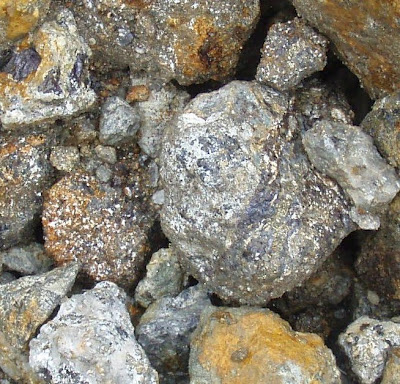What's Next
- Dimis Real Estate Hellas
- Real Estate Directory
- Actinomyces and Actinomycetes
- Acidemia and Acidosis
- Histone Acetylation Mechanism
- Autosomal Dominant and Recessive
- Avahi Wooly Lemurs
- Lesvos Hotels
- What Hosting is the Best Host
- What Lawyer to Choose
- Is Wikipedia Reliable
- Logic and Logical Thinking
- Style Tips and Style Advices
- Non Woven Shopping Bags
- Blog for Real Estate Agents in Greece
- JigSaw Puzzles Dedicated Blog
- SEO Services
- Tips and Cheats for PlayFish
Acanthite Mineral
It is the most important silver ore next to Galena and it is the low temperature modification of silver sulphide (Ag2S). All natural silver sulphide specimens at room temperature are acanthite. Galena is a lead ore that contains often enough silver (around 1%) and when it is processed supplies the majority of the world's needs.
Acanthite as mineral, is often confused with the name argentite and without surprise. They are very similar except the structure.At atmospheric pressure acanthite is stable below 173-177°C while argentite is stable only above this temperature and its structure is the high temperature cubic form that can't be quenched. That is the main difference.Acanthite also appears as the tarnish on sterling silver.
Upon cooling to below 173 degrees Celsius, argentite transforms from its isometric structure to the monoclinic structure of acanthite. The transformation often distorts the crystals to unrecognizable shapes, but some will still have an overall isometric crystal shape. These crystals are called pseudomorphs (false shapes) as they are actually acanthite's crystals in the shape of argentite's crystals. Argentite has been historically used when referring to these crystals, but the acknowledgment of the true identity of the mineral requires the naming of these crystals (at lower temperatures) as acanthite.
Acanthite forms interesting groups of crystals that are often distorted but they can be recognized into branching structures.It is generally easily recognized although it might change its shape and appear like galena or some other silver sulphide minerals.Acanthite is a very valuable mineral specimen because it has very high silver content and it is preserved like a rarely good crystal.
Acanthite has very recognizable characteristics such as following :
Notable Occurrences include Guanajuato, Mexico; Freiberg and Saxony, Germany; Cobalt, Ontario, Canada; Comstock Lode, Nevada and Butte, Montana, USA; Cornwall, England; Chile; Peru; Bolivia and especially Kongsberg, Norway.

Simon & Schuster's Guide to Rocks & Minerals
Peterson First Guide to Rocks and Minerals
A Field Guide to Rocks and Minerals (Peterson Field Guides)
Rocks, Gems and Minerals: Revised and Updated (A Golden Guide from St. Martin's Press)
Handbook of Rocks, Minerals, and Gemstones (Rocks, Minerals and Gemstones)
Rock and Gem
Acanthite as mineral, is often confused with the name argentite and without surprise. They are very similar except the structure.At atmospheric pressure acanthite is stable below 173-177°C while argentite is stable only above this temperature and its structure is the high temperature cubic form that can't be quenched. That is the main difference.Acanthite also appears as the tarnish on sterling silver.
Upon cooling to below 173 degrees Celsius, argentite transforms from its isometric structure to the monoclinic structure of acanthite. The transformation often distorts the crystals to unrecognizable shapes, but some will still have an overall isometric crystal shape. These crystals are called pseudomorphs (false shapes) as they are actually acanthite's crystals in the shape of argentite's crystals. Argentite has been historically used when referring to these crystals, but the acknowledgment of the true identity of the mineral requires the naming of these crystals (at lower temperatures) as acanthite.
Acanthite forms interesting groups of crystals that are often distorted but they can be recognized into branching structures.It is generally easily recognized although it might change its shape and appear like galena or some other silver sulphide minerals.Acanthite is a very valuable mineral specimen because it has very high silver content and it is preserved like a rarely good crystal.
Acanthite has very recognizable characteristics such as following :
- Color is lead gray to black.
- Luster is metallic.
- Transparency: Crystals are opaque.
- Crystal System: Monoclinic; 2/m below 173 degrees Celsius (acanthite) and isometric; 4/m bar 3 2/m above (argentite).
- Cleavage is absent.
- Fracture is conchoidal.
- Hardness is 2.5 - 3
- Specific Gravity is approximately 5.5 - 5.8 (slightly heavy even for metallic minerals).
- Streak is a shiny black.
- Sectile, meaning it can be cut with a knife like lead and fresh shiny surfaces will eventually form a dull coating after prolonged exposure to light (can be removed by ultrasonic treatment).
Notable Occurrences include Guanajuato, Mexico; Freiberg and Saxony, Germany; Cobalt, Ontario, Canada; Comstock Lode, Nevada and Butte, Montana, USA; Cornwall, England; Chile; Peru; Bolivia and especially Kongsberg, Norway.
- Best Field Indicators are crystal habit, density, softness, sectility, association with other silver sulfosalts and color.
Resources
Smithsonian Handbooks: Rocks & Minerals (Smithsonian Handbooks)Simon & Schuster's Guide to Rocks & Minerals
Peterson First Guide to Rocks and Minerals
A Field Guide to Rocks and Minerals (Peterson Field Guides)
Rocks, Gems and Minerals: Revised and Updated (A Golden Guide from St. Martin's Press)
Handbook of Rocks, Minerals, and Gemstones (Rocks, Minerals and Gemstones)
Rock and Gem
Subscribe to:
Comments (Atom)




